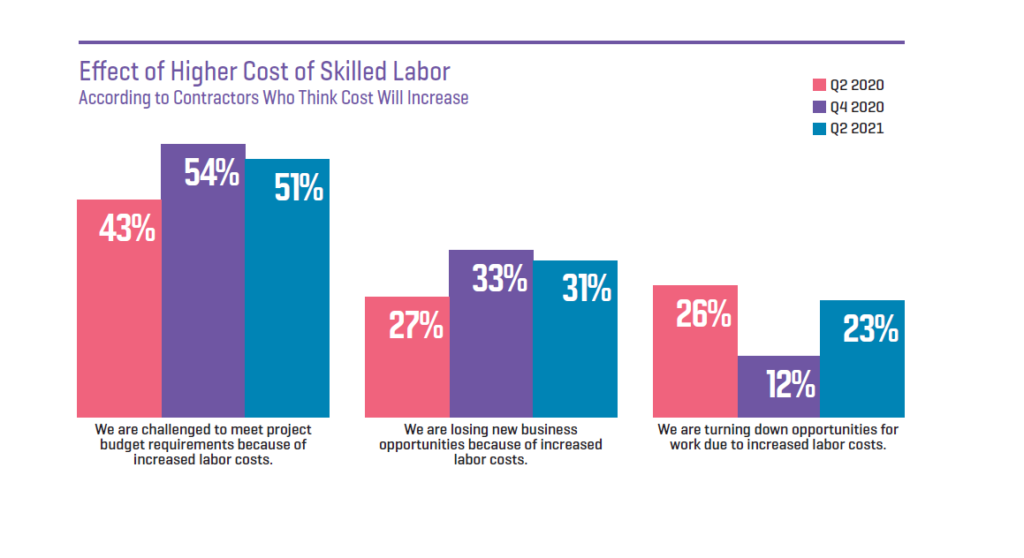By Scott Shurtleff
Although the outlook for the civil construction industry in the foreseeable future is quite sunny in terms of projects and prospects, a few clouds linger. Variables like supply chain uncertainty and more competitors chasing civil work are making the terrain tougher to navigate. But another layer of weather looms in the sky; finding and retaining skilled workers to meet this growing demand.
With a robust job market amid an economic recovery, companies across all sectors are scrambling for labor, and construction is no exception. Recent Dodge Data & Analytics surveys of civil contractors, published in the Civil Quarterly series of research reports, show that they expect more projects to become available in the next two years and will need to hire additional skilled labor over the coming months. But at the same time, these contractors report increasing difficulty finding enough skilled workers. The impact of this is reflected in a finding that 23% of them are turning down new business opportunities, almost unheard of in older surveys of this segment.

The group that will likely gain greater leverage from this changing market is the skilled workers. With more competitors in the arena seeking their skills, these workers can be more selective, and demand higher pay. In fact, a whopping 81 percent of the civil contractors from the survey foresee an increase in costs for skilled labor, up sharply from 66% in the survey six months before that. As this number continues to rise, the picture becomes bleaker when coupled with the finding that civil contractors are increasingly concerned about the skill levels of available workers.

Paying more money for lesser quality is an impractical business model. But it is the reality facing many contractors—at least in expectations. Among the fallout from the higher costs of skilled labor, contractors point to the added challenges to meeting budgetary requirements as the number one impact (51%). This is followed by the fear of losing out on new business opportunities (31%) because of higher labor costs.

Concrete workers are the most difficult to find, according to the survey. Although that anxiety dipped modestly from 58% to 49 between the last two surveys, skilled concrete workers continue to be the most difficult to find, followed by site and excavation specialists.
Construction is always a complex balancing act of labor and materials, both of which are facing unprecedented scarcity in this otherwise booming environment of opportunities. While the global supply chain challenges may ease in the near term, there are fewer “quick-fixes” available for the industry’s more fundamental workforce issues.
When asked how they are dealing with their current labor shortages, many contractors note the positive results they are achieving through in-house training of their staff. While not yet widely embraced, this upskilling investment has the potential to enable companies to do more with the constrained resources already at hand. Contractors’ most frequently cited longer term solution to the workforce issue is greater emphasis on vocational and technical training in our country to create a sustainable flow of skilled workers into the future.
– – –
Scott is an honorably discharged veteran of US Army Airborne. As a military journalist and correspondent he served as an embedded reporter with several units in various theaters around the globe. He spent more than two decades in the construction industry as contractor, business owner, and master carpenter before earning a Master’s degree in journalism from Northeastern University.
